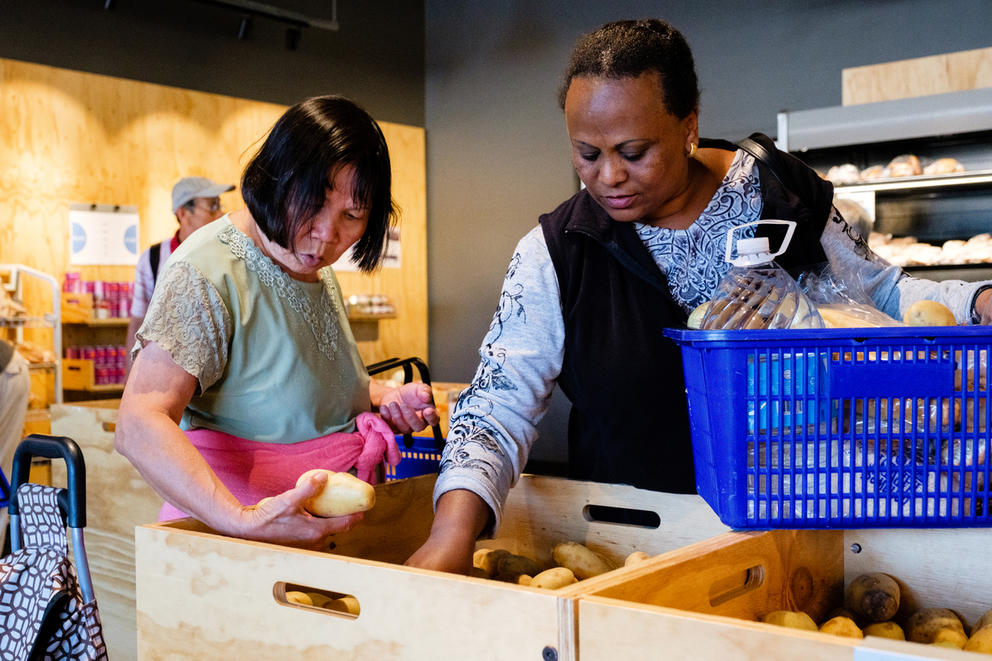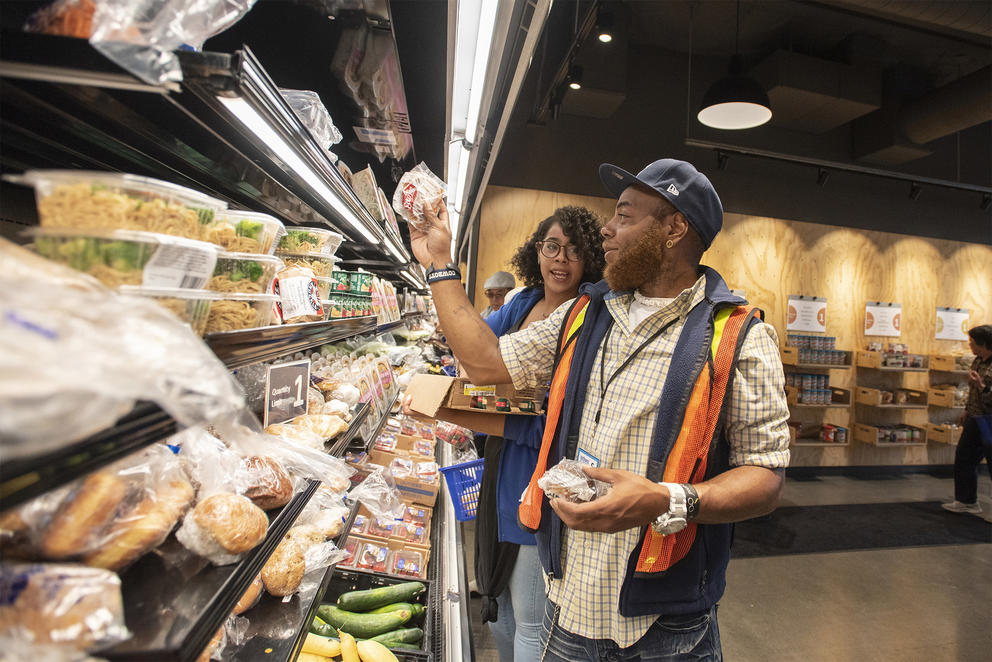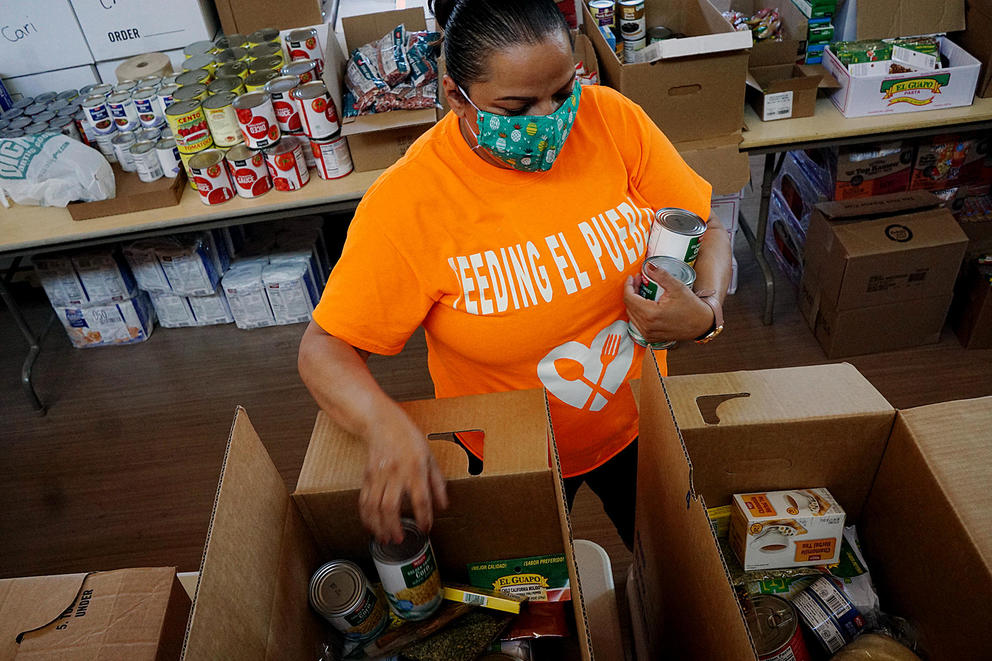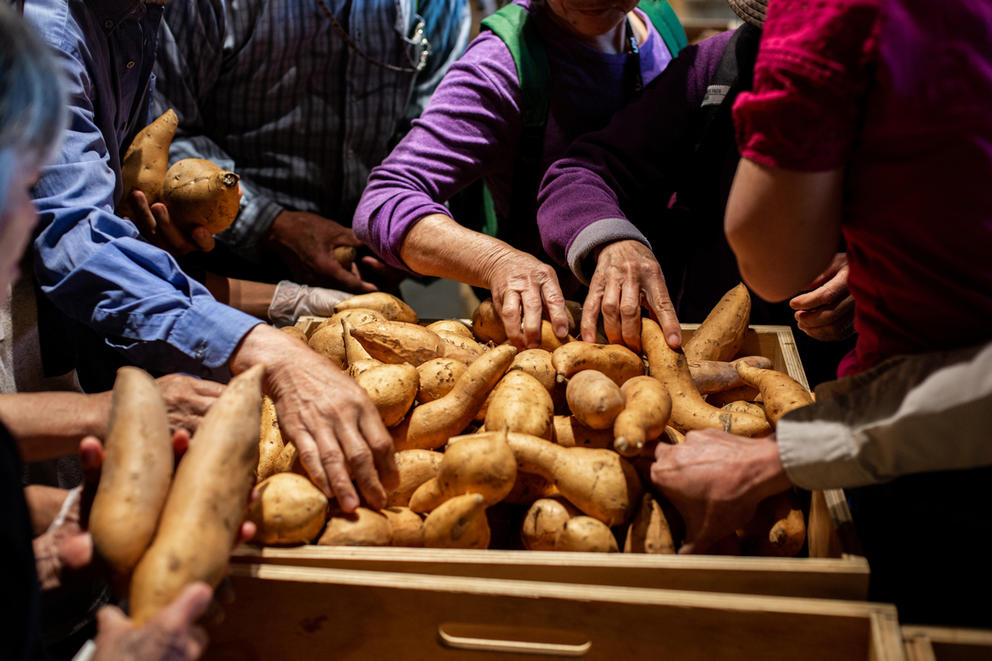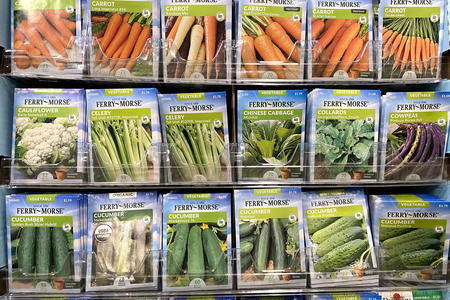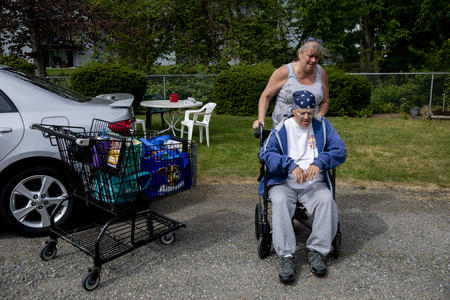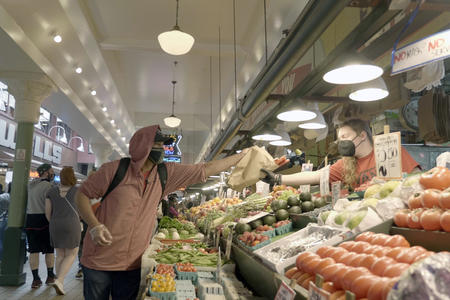At the Rainier Valley Food Bank, about 200 people arrive each week to pick up grocery bags full of free food, and once the facility fully reopens, said director Gloria Hatcher-Mays, “we expect it to go up to about 500 or 600 by the end of the summer.”
While Soledad Brown takes pride in her work at the Rainier Beach Food Bank, her community and many others across Washington state still face food insecurity, despite an easing of the pandemic and a heated economy. Food banks were under critical strain at the height of the COVID-19 pandemic because of high unemployment rates and declining availability of volunteers during the stay-at-home order. But thanks to surging donations and a boost in federal funding — including $500 million in American Rescue Plan aid from the U.S. Department of Agriculture to food banks announced last year — nearly all met the increased demand and reopened after the height of the pandemic.
Food insecurity remains at high levels across Washington state, according to a report from the University of Washington’s Center for Public Health Nutrition published in December. Before the pandemic, 1 in 10 residents was uncertain about their ability to purchase enough food, but as recently as last summer, the report found that a quarter to a third of Washingtonians were food insecure.
“We aren’t seeing a decrease in demand,” said Hatcher-Mays of the Rainier Valley Food Bank. The organization’s home delivery program, which launched during the pandemic, expanded quickly from about 200 clients to about 1,200 and has remained constant over the past two years, she said.
Thomas Reynolds, CEO of Northwest Harvest, said an internal report covering March and April of this year indicated that of the 89 food banks who reported back, 77 saw increased demand, eight saw declining need and four saw about the same volume as the previous year. Northwest Harvest serves 375 food banks.
Low income is the primary driver of food insecurity in Washington, Reynolds said. Families earning less than $35,000 a year still have rates of food insecurity 50% higher than at pre-pandemic levels, according to the UW report It also showed that as recently as August 2021, the rates of people uncertain about how they’ll afford food were highest among people of color. While 17% of the state’s white population were considered “very food insecure,” that rate was 31% for the state’s Black population and 36% for Latinos. The study also found that 27% of families with children and 29% of veterans in Washington were “very food insecure.”
Reynolds suspects a lot of people tapped out alternate sources of cash during the pandemic, including selling assets and taking out loans. Now that eviction moratoriums and stimulus payments have ended, people with low incomes are facing financial pressure, Reynolds said, leaving them with few options to obtain cash for food.
“Hunger is a poverty issue, plain and simple,” said Mark Coleman, a spokesperson for Food Lifeline, which supplies more than 350 food banks and meal programs in Western Washington. “What we’ve learned during the pandemic is just how close people are to the breaking point. Just one car repair, one medical bill, or one large utility bill away from not being able to afford food.”
At Alimentando al Pueblo, a food bank in Burien that’s focused on culturally relevant foods for south King County’s Latino community, director Roxana Pardo Garcia said there has been no decline in interest for the 100 boxes her team prepares each week. Alimentando creates three different styles of food boxes, each geared toward foods familiar to people from Mexico, Central America or the Caribbean — whether it’s guajillo chiles, masa and tomatillos or coconut milk and plantains.
“We’re always seeing a demand because other food banks aren’t providing the foods our communities are consuming,” Garcia said. “The more people find out about us, the more people we have show up.”
Taking lessons from the pandemic, food banks are moving away from the traditional model of offering grocery bags full of donated staples. such as rice, dried pasta and canned foods. Northwest Harvest now supplements traditional donations from individuals and grocers by purchasing foods that are essential in certain ethnic communities. At Northwest Harvest’s SoDo Community Market, which functions as a no-cost store where clients hand-select their own groceries, Reynolds noted that ingredients relevant to Asian American and Pacific Islander communities, such as soy sauce, oyster sauce, bok choy and lemon grass, are popular.
“Just because people are economically disenfranchised doesn’t mean they are not deserving of the foods they like to eat,” Garcia said.
The ongoing supply chain crisis, food price inflation and rising fuel costs are also putting pressure on the state’s food bank system. Food Lifeline spends about $2 million per year on purchased food — whether it’s culturally relevant foods or fresh meat and produce — to supplement its donations. In particular, proteins are surging in price, Coleman said, noting that the cost of a truckload of chicken has more than doubled in the past year. Across the state, food prices rose 3.4% between 2020 and 2021, the highest jump in a decade, the UW report found.
Despite these pressures, Northwest Harvest and Food Lifeline report that donations continue to be strong, though they emphasize that the need is still critical.
Many food banks are also moving toward offering more fresh produce, which is costly to acquire and store.
Reynolds observed that a Northwest Harvest facility in Kent will be closing and shifting to a new location in Auburn that has more refrigerated storage space for fresh fruit and vegetables: “You're adding a lot of value to families and individuals who are looking to eat healthy,” he said.
The pandemic caused many food banks to reevaluate their approaches and test innovative new ideas. Rainier Valley Food Bank is now committed to home delivery, which is especially effective in reaching older people, people with disabilities and families with young children. It’s also working with Terrebonne Truck Patch, a Black-owned farm in Duvall, to source local, organically grown produce.
Northwest Harvest’s SoDo market includes a drive-thru, which Reynolds said is especially important for families with children or service industry workers with little extra time in their schedules. He noted that saving people time can be as valuable as providing free food. To that end, Northwest Harvest and other organizations are moving toward making food banks more of a one-stop destination for various resources, including legal aid, housing assistance and health care services. “When you are experiencing food insecurity, time is so precious,” Reynolds said. “If you can get multiple services taken care of on one bus ride, it's so much more valuable than having to schlep across the city.”
Rainier Valley Food Bank, which just purchased and moved into a new building in Rainier Beach, plans to renovate the 5,000-square-foot space over the next two years to add an additional 5,000 square feet of facilities, including space for a full suite of social services programming. Currently, the nonprofit REACH provides once-a-week services to unsheltered clients of the food bank, providing assistance with benefits, housing and mental health service.
“We want to be the one place you can come to get all the services you need,” said James Gruspy, youth and community organizer at Rainier Valley Food Bank, “whether it’s social connections or housing or even getting a shower.”
In cooperation with Seattle Public Utilities, the food bank has a trailer with sparkling new showers and bathrooms available on Fridays and Saturdays in its parking lot. “People are finding connections here that were missing during the pandemic,” Gruspy said. “Isolation is such a problem in our community. What we offer isn’t just resources but relationships. When someone who used to be homeless comes back here to hold a party, I’d say that’s a success.”

